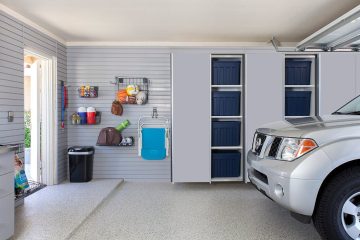Have you ever wondered how to transform your walls from plain to stunning? Plaster for walls can be the answer you seek.
Whether you’re renovating a room or building from scratch, knowing about plaster can make a big difference. It offers not just beauty but also durability and sound insulation. In this guide, we’ll explore the types of plaster, application techniques, and tips to achieve a smooth finish.
Let’s dive into plastering solutions and unlock their full potential for your home!
Types of Plaster
Gypsum plaster is a common choice for interior walls. It is easy to work with and dries quickly. If you need to extend the working time of gypsum plaster, you should learn about halftime retarder. This type of plaster is often used in residential and commercial buildings.
Lime plaster is another option that has been used for centuries. It is made from lime and sand and is known for its flexibility. This makes it suitable for older buildings where movement may occur.
Cement plaster is strong and water-resistant. It is typically used for exterior walls and areas that are exposed to moisture. This type of plaster can withstand harsh weather conditions.
Acrylic plaster is a modern option that offers many benefits. It includes additives that increase durability and flexibility. This plaster is available in various colors and finishes, allowing for design versatility.
Tools Needed
To apply plaster, you need specific tools. A trowel is essential for spreading and smoothing the plaster. A hawk is also important for holding plaster while you work.
You will need a mixing bucket to combine plaster with water. This helps achieve the right consistency. A sanding sponge is useful for smoothing the surface after the plaster has dried.
Preparation Steps
Before applying plaster, surface preparation is crucial. Start by cleaning the wall to remove dust and debris. This ensures better adhesion of the plaster.
Next, repair any cracks or holes in the surface. Use a suitable filler for this task. Finally, apply a bonding agent to help the plaster stick well.
Application Techniques
Mix the plaster according to the manufacturer’s instructions. This ensures you get the correct consistency for application. A well-mixed plaster will spread easily on the wall.
Apply the first coat of plaster using a trowel. Spread it evenly and work from the top of the wall down. Allow the first coat to dry completely before adding a second coat.
Common Issues and Solutions
Cracking can occur in plaster if it dries too quickly. To prevent this, keep the area slightly damp during the plastering process. This helps maintain the integrity of the plaster.
Bubbling is another common issue caused by trapped air. It is important to apply the plaster gently to avoid this problem. Uneven surfaces can be fixed by sanding down high spots and using a straightedge to check for flatness.
Transform Your Space Effortlessly With Plaster for Walls
In conclusion, plaster for walls is a valuable option for many construction and renovation projects. It offers both aesthetic appeal and functional benefits, making it a popular choice among builders and homeowners. With the right tools and techniques, anyone can achieve a professional-looking finish.
Investing time in learning about plaster can enhance your skills. This knowledge will help you create durable and attractive walls in any space.
Did you learn something new from this article? If so, be sure to check out our blog for more educational content.




